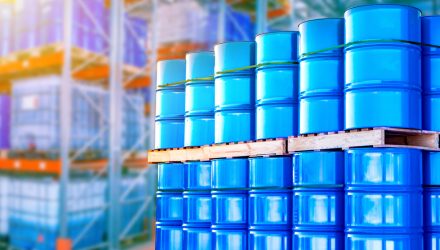Oil prices topped $120 a barrel on Monday lifted by Saudi Arabia raising its July crude prices and amid doubts that a higher output target for OPEC+ oil producers would ease tight supply, CNBC reported.
Simultaneously, as gasoline prices soar to new highs in regions throughout the U.S., investors may be wondering what impact this has on their energy infrastructure investments.
The impacts of high crude oil prices are widespread. However, midstream differs from other segments of energy in the way that it earns a profit, making it less sensitive to fluctuations in oil and natural gas prices.
“I think most people think about energy pipelines and they automatically think that this is a play on commodities,” Paul Baiocchi, chief ETF strategist at SS&C ALPS Advisors, said during a recent VettaFi live cast. “These companies provide an important economic function connecting energy production to energy consumption.”
Energy infrastructure companies are those that perform the shipping and handling functions of the energy industry, and they provide their services for a fee. Examples include companies that operate pipelines, facilities that process natural gas and natural gas liquids, and those that operate storage and export terminals, Stacey Morris, director of research at Alerian, said during the live cast today.
“Importantly, these companies are usually providing services for a fee and that results in very stable cash flows,” Morris said.
Thus, the relationship between energy infrastructure companies and the price of crude oil or natural gas has been fairly weak.
“Thinking about correlations, it has been anywhere from 0.5 to 0.6, so you don’t have the type of strong correlation between energy prices and midstream companies that you might expect… And that’s because these companies are in the business of earning fees based on the volume that they move of crude oil and natural gas — and of course, other functions like processing and storage,” Baiocchi said.
While midstream companies don’t directly benefit from rising energy prices, there are indirect benefits for the space.
“If crude oil prices go up and natural gas prices go up, you might see some more rigs and you might see some more production and therefore that might lead to [higher] volumes,” Baiocchi said. “But in terms of a direct relationship between midstream companies and the price of crude oil or natural gas, it’s fairly weak and that’s…why midstream differs from other segments of energy.”
The Alerian Energy Infrastructure ETF (ENFR) and the Alerian MLP ETF (AMLP) are two funds to consider when looking to add exposure to energy infrastructure.
For more news, information, and strategy, visit the Energy Infrastructure Channel.
vettafi.com is owned by VettaFi, which also owns the index provider for ENFR and AMLP. VettaFi is not the sponsor of ENFR and AMLP, but VettaFi’s affiliate receives an index licensing fee from the ETF sponsor.

